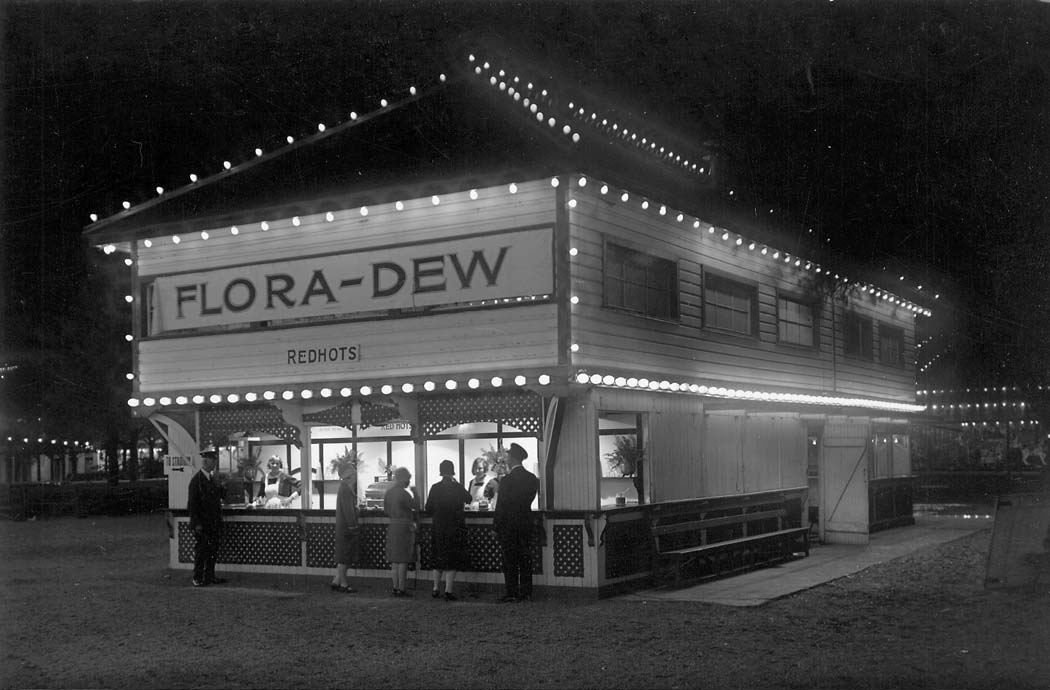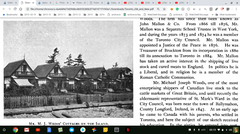
Toronto Islands Visiting Guide: Tickets, Hours, History, and Top Attractions
Date: 14/06/2025
Introduction
The Toronto Islands are a tranquil archipelago just off downtown Toronto in Lake Ontario, offering a rare blend of natural beauty, cultural heritage, and recreational diversity. Known as Mnisiing in Anishinaabemowin, these islands are deeply significant to Indigenous communities, particularly the Wendat, Anishinaabe, Haudenosaunee Confederacy, Mississaugas of the Credit First Nation, and Métis Nation. Over millennia, they have served as a site for ceremonies, trade, and gatherings, a tradition recognized and celebrated today (historyoftoronto.ca).
Having evolved from ancient sandbars shaped by Lake Ontario’s currents and later by human intervention, the islands now form North America’s largest urban car-free community (Wikipedia). Their layered landscape features historic landmarks like the Gibraltar Point Lighthouse, vibrant residential communities, family-friendly attractions, and critical habitats for local wildlife (World Atlas). Accessible via year-round ferry service from downtown, the islands are a welcoming destination for families, nature lovers, history buffs, and anyone seeking an urban escape (City of Toronto).
This guide covers everything you need: visiting hours, ticketing, accessibility, travel tips, historical and cultural highlights, and practical advice to help you make the most of your Toronto Islands experience.
Table of Contents
- Introduction
- Indigenous Origins and Early History
- Colonial Transformation and Urban Development
- Recreation, Community, and Modern Identity
- Cultural Significance and Indigenous Presence Today
- Visiting the Toronto Islands: Practical Information
- Notable Heritage Landmarks & Events
- Family-Friendly and Seasonal Activities
- Dining and Amenities
- Frequently Asked Questions (FAQ)
- Conclusion
- References
Indigenous Origins and Early History
For more than 10,000 years, the Toronto Islands have been central to the lives of Indigenous peoples. The islands’ unique environment—formed by sediment from the Scarborough Bluffs—offered vital resources and a strategic meeting place for trade and communal events (Island Natural Science School). The Mohawk word “tkaronto” meaning “where there are trees standing in the water” is the origin of Toronto’s name (historyoftoronto.ca).
Gatherings, ceremonies, and stewardship continue today, with cultural events and educational initiatives honoring these deep roots (historyoftoronto.ca). The islands remain a site of ongoing Indigenous presence and reconciliation.
Colonial Transformation and Urban Development
French and British colonial contact in the 17th and 18th centuries led to the Toronto Purchase of 1793, after which the islands’ use changed dramatically (historyoftoronto.ca). The British established strategic outposts, including the Gibraltar Point Lighthouse in 1808, and used the islands for military purposes and as a quarantine station (World Atlas).
A catastrophic storm in 1858 separated the peninsula from the mainland, creating the islands’ current form. Dredging and land reclamation expanded them further, paving the way for public parks, amusement venues, and residential cottages (Wikipedia; Island Natural Science School).
Recreation, Community, and Modern Identity
By the late 19th and early 20th centuries, the islands became Toronto’s playground. Hanlan’s Point featured an amusement park and baseball stadium—site of Babe Ruth’s first professional home run (World Atlas). The islands hosted regattas, concerts, and social events, while residential communities flourished on Ward’s and Algonquin Islands (historyoftoronto.ca).
Today, strict regulations preserve the islands’ car-free, eco-friendly lifestyle. Approximately 650 residents continue the tradition of close-knit community living (World Atlas). The islands also embrace an alternative, artistic spirit, hosting open studios, music festivals, and experimental arts (PlanetWare).
Cultural Significance and Indigenous Presence Today
The islands’ cultural significance is celebrated in public events, art, and educational programs. Organizations work to revitalize Indigenous knowledge and support reconciliation, while the City of Toronto’s park management integrates Indigenous stewardship values (UFCW Canada Indigenous Calendar; Toronto Island Park Master Plan).
Festivals like Electric Island, Island Soul, and jazz concerts draw diverse audiences and reflect Toronto’s multicultural identity (PlanetWare). Hanlan’s Point Beach stands out as one of Canada’s oldest clothing-optional beaches and a symbol of inclusivity.
Visiting the Toronto Islands: Practical Information
Visiting Hours
- Park Access: Open year-round, typically 6:00 AM–midnight.
- Ferry Service: Runs daily from early morning (6:00–7:00 AM) to late evening (midnight or later in summer). Limited service in winter (Toronto Islands Ferry Service).
Tickets and Ferry Schedules
- Tickets: Purchase online, at the Jack Layton Ferry Terminal, or via mobile apps (Toronto Island Park website).
- Adult (13–64): ~CAD $8–9 round trip
- Seniors/Youth: Discounted
- Children under 2: Free
- Bikes: Extra fee
- Tip: Buy tickets in advance during peak season. Check ferry schedule for current times.
Accessibility
- Ferries and most main island paths are wheelchair accessible.
- Accessible washrooms and parking are available.
- Some natural trails may be uneven—plan ahead if you have mobility needs.
Travel Tips
- Arrive early on weekends/holidays to avoid ferry lineups.
- Bring sunscreen, water, and a picnic (options for food are available but limited).
- Rent a bike or kayak for flexible island exploration.
- Respect wildlife, stay on trails, and participate in community clean-up initiatives.
Nearby Attractions
- Centreville Amusement Park
- Far Enough Farm
- Harbourfront Centre, CN Tower, Ripley’s Aquarium (downtown, near ferry terminal)
Notable Heritage Landmarks & Events
- Gibraltar Point Lighthouse (1808): One of the oldest Great Lakes lighthouses, famed for its legends (World Atlas).
- Hanlan’s Point: Historic amusement park and site of Babe Ruth’s first home run.
- Island Cottages: Historic 1920s communities on Ward’s and Algonquin Islands (Trip101).
- WWII Military Base: Training grounds and surviving historic structures.
Family-Friendly and Seasonal Activities
- Centreville Amusement Park: 30+ rides, petting zoo, and family attractions (History of Toronto).
- Franklin Children’s Garden: Interactive nature and play area.
- William Meany Maze: Hedge maze for all ages.
- Beaches: Centre Island (family-friendly), Hanlan’s Point (clothing-optional), Ward’s Island (quiet, scenic).
- Recreation: Cycling, kayaking, canoeing, picnicking, and open-air yoga.
- Festivals: Music, art, and food events throughout summer (ToDoCanada).
Dining and Amenities
- Several cafés, snack bars, and the Upper Deck (marina views) operate seasonally.
- Barbecues and picnic tables are available—bring your own food for flexibility.
- Restrooms and change facilities at major beaches and attractions.
Frequently Asked Questions (FAQ)
Q: What are the Toronto Islands visiting hours?
A: The park is open daily from 6:00 AM to midnight. Ferry schedules vary by season.
Q: How do I buy ferry tickets?
A: Online, at the terminal, or via mobile app (Toronto Islands Ferry Service).
Q: Are the islands accessible for people with disabilities?
A: Yes, ferries and main paths are accessible, with facilities and parking for visitors with disabilities.
Q: Can I bring my bike?
A: Yes, bikes are allowed on ferries (extra fee) and for rent on the islands.
Q: What activities are available?
A: Beaches, amusement park, nature trails, bike/kayak rentals, guided tours, festivals, and picnicking.
Q: Are dogs allowed?
A: Yes, leashed in most areas; check signage for off-leash zones.
Q: Is there food on the islands?
A: Seasonal cafés and snack bars; bring your own food for more options.
Conclusion
The Toronto Islands are a cherished destination that weave together Toronto’s Indigenous heritage, colonial history, natural wonders, and vibrant community life. Whether you’re seeking relaxation, adventure, or cultural enrichment, the islands are accessible, family-friendly, and welcoming to all. Their ongoing stewardship by Indigenous communities and commitment to sustainability ensure their magic endures for generations.
For the most rewarding visit:
- Check ferry schedules and ticketing in advance
- Explore both popular and hidden spots
- Respect the land’s heritage and natural environment
For interactive maps, guided tours, and up-to-date event info, download the Audiala app and follow us on social media.
References
- The Rich Indigenous History of Toronto Island Unveiled: Discover the Untold Stories (historyoftoronto.ca)
- The Fascinating History of Toronto, Canada: From Its Indigenous Roots to Its Modern Metropolis (historyoftoronto.ca)
- Toronto Islands, Canada (World Atlas)
- History of Toronto Island Park: From Indigenous Settlers to Amusement Parks and Heritage Conservation Efforts (historyoftoronto.ca)
- Toronto Islands Visiting Guide: Cultural Significance, Visitor Info, and Things to Do (PlanetWare)
- Toronto Islands Ferry Service Official Site (City of Toronto)
- Toronto Island Park Master Plan (City of Toronto)
- Toronto Islands (Wikipedia)
- UFCW Canada Indigenous Calendar
- Trip101: Things to do in Toronto Island, Canada
- ToDoCanada: Toronto June Events & Festivals
- Toronto2Anywhere: Things to Do in Toronto in Spring
- Destination Toronto: Toronto Islands



























































































































































































